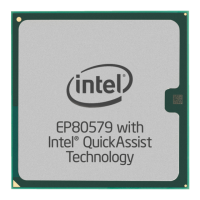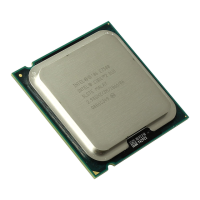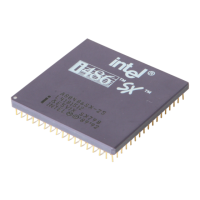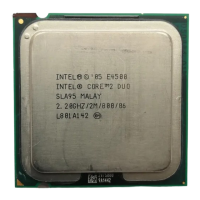Intel
®
EP80579 Integrated Processor Product Line—Real Time Clock (RTC) Interface
Intel
®
EP80579 Integrated Processor Product Line
Platform Design Guide May 2010
193 Order Number: 320068-005US
15.0 Real Time Clock (RTC) Interface
15.1 RTC Interface
The EP80579 contains a Real Time Clock (RTC) with 256 bytes of battery-backed SRAM.
The internal RTC module provides two key functions:
• keeping the date and time
• storing system data in its RAM when the system is powered down
The RTC module uses a crystal circuit to generate a low-swing 32 KHz input sine wave.
This input is amplified and driven back to the crystal circuit via the RTCX2 signal.
Internal to the EP80579, the RTCX1 signal is amplified to drive internal logic as well as
generate a free-running, full-swing clock output for system use. This output signal of
the EP80579 is called SUSCLK, as illustrated in Figure 129.
15.1.1 RTC Crystal
The RTC module requires an external oscillating source of 32.768 KHz connected to the
RTCX1 and RTCX2 signals. Figure 130 shows the external circuitry that comprises the
oscillator of the RTC:
Figure 129. RTCX1 and SUSCLK Relationship in EP80579
EP80579
Internal
Oscillator
RTCX1
SUSCLK
Low-Swing 32.768 KHz
Sine Wave Source
Full-Swing 32.768 KHz
Output Signal

